#large format cinema lenses
Explore tagged Tumblr posts
Text
Fujifilm Japan: Fujifilm unveils the latest development roadmap for interchangeable lenses designed for the GFX Series of mirrorless digital cameras – Press release
GF 55Fujifilm unveils the latest development roadmap for interchangeable lenses designed for the GFX Series of mirrorless digital cameras TOKYO, September 12, 2023 – FUJIFILM Corporation (President & CEO, Representative Director: Teiichi Goto) has unveiled the latest development roadmap for interchangeable GF lenses designed for the GFX Series of mirrorless digital cameras, which incorporate the…
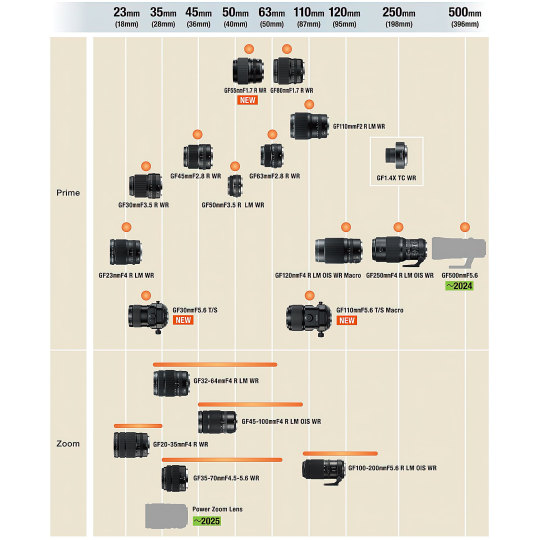
View On WordPress
#"Fujicron" lenses#Fujifilm Fujinon GF 110mm f/5.6 T/S Macro#Fujifilm Fujinon GF 30mm f/5.6 T/S#Fujifilm Fujinon GF 55mm f/1.7 R WR#Fujifilm G-mount lenses#Fujifilm GFX cameras#Fujifilm large format#large format cameras#large format cinema lenses#large format cinematography#large format filmmaking#large format video#power zoom lenses#ultra-telephoto prime lenses
0 notes
Text
Leica 1
I purchased the Leica 1 camera and accessories around 6 years ago when I saw a local ad of someone wanting to sell off a recently departed family member's old cameras. I responded to the ad, and for some reason, the person liked my passion for cameras and photography, so when I heard that the camera they had from a grandparent was a Leica, it piqued my interest. They had mentioned that the camera was in good shape and had some accessories in a case; I told them I was interested in seeing what they had.
I try not to get into situations where you meet someone with some valuable equipment at a random location, so for safety reasons for both parties, we met at a local police station, which was agreeable to both. When they pulled out the case and I saw it was an early Leica, my heart fluttered a bit.
Pulling the camera from the case, I found it in excellent condition and working. All the shutter speeds sounded accurate to the ear, and the rangefinder and extra film cassette were in the metal container and within the case, too. The owner wanted to be sure the camera was going to a good home and not just being sold. I reassured the person that I planned on keeping the camera and shooting with it, which they loved.
Since adding the Leica 1 to my collection, I've made a point to keep it in top condition. Every now and then, I take it out and give the shutter a few test clicks to ensure it's in good working order. However, due to my busy schedule, I hadn't had the chance to load a roll of film and actually use the camera until recently.
I wanted to write about the Leica 1 for my blog about a month ago. I took the camera out and started to put a roll of film into the camera to shoot with it, and the shutter jammed. What bad luck! I called my friend Allen Wade at CameraWerks in NY, who always does a terrific job servicing my cameras and lenses. I sent the Leica 1 along with a few other items to him to get serviced. About a month later, I received the cameras back from him, and they were in fabulous condition. At this point, I put a fresh roll of film into the camera to see how the camera worked so I could write about it.
The Company:
Oskar Barnack was a German optical engineer who revolutionized photography by inventing the first practical 35mm camera, the Leica I. Born in 1879, Barnack initially worked in the optical industry, eventually joining Ernst Leitz Optische Werke, a German company specializing in microscopes and optical instruments. His pioneering work in miniaturizing cameras led to the creation of the Leica, which forever changed the way photographs were taken.
Before Barnack's innovation, photography relied on bulky, cumbersome cameras that used large-format glass plates or film sheets. These devices were difficult to transport and required long exposure times, limiting their usability. An enthusiastic amateur photographer, Barnack sought to develop a more compact and convenient camera system that would still produce high-quality images. He turned to 35mm cinema film, which was already used in the motion picture industry, and repurposed it for still photography. He aimed to create a small, lightweight camera that could capture multiple images on a single roll of film.
Around 1913-1914, Barnack developed a prototype of what would later become the Leica (short for "Leitz Camera"). This early model, known as the "Ur-Leica," used perforated 35mm film and a horizontal transport mechanism. The key innovation was that the film was advanced in small increments, allowing multiple exposures on a roll rather than requiring a single frame per exposure. Barnack also incorporated a focal-plane shutter, providing precise control over exposure times.
The outbreak of World War I delayed the commercialization of the Leica. Still, in 1924, Ernst Leitz II, head of the Leitz company, decided to move forward with production. The Leica I was officially introduced at the Leipzig Spring Fair in 1925, marking the beginning of the 35mm camera revolution. The camera instantly succeeded due to its portability, superior image quality, and innovative design.
Leica cameras quickly became popular among professional and amateur photographers, particularly in journalism and street photography. Their ability to take quick, candid shots without cumbersome equipment made Leica the camera of choice for legendary photographers like Henri Cartier-Bresson and Robert Capa.
Over the decades, Leica continued to innovate, introducing models such as the Leica II (1932) with interchangeable lenses and the Leica M series (1954), which refined the rangefinder design. The company also played a crucial role in developing optical advancements, such as high-quality lenses like the Summicron and Noctilux.
Today, Leica remains an iconic brand known for its precision engineering and commitment to craftsmanship. Oskar Barnack's vision laid the foundation for modern photography, and his pioneering work continues to influence camera design and photographic culture worldwide.
My Camera:
The first thing I noticed when I started to use the Leica 1 was how compact the camera is. When the lens is retracted, the camera is one you can put into your coat pocket to have handy when traveling or just for everyday use. The camera is 5.25" wide by 2.5" tall, including the winding knobs and viewfinder, by 1 5/8" deep when the lens is retracted and 2.5" deep when the lens is extended. My Leica 1 weighs just under 1 lb. and comes in at 15.6 oz without film loaded into the camera. The serial number on my camera is 19569, which, according to the lists online, the camera was made in 1929, along with a bit over 8,000 made that year. The Leica 1 cameras were made between 1926 and 1931 and were popular, producing approximately 70,000 cameras during that time. My camera comes with a Leitz Elmar 50mm f3.5 lens, and I've looked everywhere but do not see a serial number on the lens. This could be because the camera didn't have interchangeable lenses, and the serial number for the camera was enough.
The early Leica is different from the later models as the rangefinder is separate and needs to be attached to the accessory shoe for the photographer to achieve fine focus on the subject. Once the photographer uses the rangefinder, they need to transfer the focus distance shown on the rangefinder to the lens focus before taking the photo, so the process is longer and more tedious. The viewfinder on the top is for composition purposes only.
Also, the lens needs to be extended from the camera body and "locked" into position by turning the lens clockwise until you feel the lens cannot be turned anymore. Now you're in the "taking" position of the lens. To retract the lens for transportation or to put it away, turn it counterclockwise, press it back into the body, and put the lens cap on so you don't damage the optics. The lens on the Leica 1 isn't interchangeable due to a pin at the 11:00 position on the camera body, which prevents the lens from being unscrewed from the camera body. The pin also limits the lens's ability to focus only from the minimum focus distance of 1.5 feet to infinity. Unscrewing the pin will remove the lens from the body for servicing or cleaning if needed.
Also on top of the camera is the shutter speed dial with speeds of 1/500, 1/200, 1/100, 1/60, 1/40, 1/30, 1/20, and "Z" for timed exposures. You must lift and turn the dial to change the shutter speed. Still, it's always recommended to do so after you cock the shutter, which is done by winding the film advance lever until it stops. The shutter release is next to the film advance lever and just behind the switch for film advance, which is in the "A" position, flipping it to "R" for film rewind.
Loading the film on a Leica is different than what people are now used to when they load a 35mm camera. The back on early Leica's and rangefinder cameras do not swing open. You must remove the base plate by turning a switch on the bottom to the "open" position, then pull the baseplate off the camera. You can take out the film's take-up spool, which you can grab and pull out. The easiest way to load the camera is to put the film leader into the take-up spool, then pull a bit of the film leader out so you can slide the film cassette and take-up spool into the camera body at once. Push the cassette and take the spool into position, ensuring the film is behind the shutter. Put back on the baseplate and turn the switch to "locked."
Before I wind to the first frame, I always take up the slack by turning the rewind knob a bit, so when I do wind to the first frame, I watch the rewind knob turn so I know the film is transporting across the shutter. Set the frame counter to 1, which is around the film advance knob and can be moved by two pegs on either side of the knob. Double-check to ensure the film advance switch is in the "A" position and wind to your first frame.
Now that I have the camera loaded with film, I'm going to take a stroll through the neighborhood and see how it performs.
My Results.
After attaching the rangefinder to the camera, I wanted to get the whole experience of what it was like to photograph with the Leica 1, as people did almost 100 years ago. I also have my trusty Sekonic L-308X-U around my neck for accurate metering; I went walking through the neighborhood, focusing on the subject, then transferring from what the rangefinder said the focus. Using the meter to get proper meter readings and setting both the shutter and aperture to the meter settings. I really took my time taking photos with this camera.
Here are a few of the different images I took with the early Leica 1 camera.
Conclusion:
I can see why people would have liked and wanted to use this camera almost 100 years ago. It's small, compact, and lightweight. The process of taking photos was slower. Still, it was fun compared to what they needed to do 100 years ago. As a photographer, taking your time, metering your subject, focusing on your subject, and composing the photo was fun. It's much different than what we have now with autofocus, automatic metering, and film advance.
I made a short video on the Leica 1 Camera, which shows the controls and loading the camera with film.
I want to start using the Leica 1 regularly. It's quiet to shoot with, the lens is sharp, and it's small and compact. Overall, it's a great and fun camera.
Thank you for taking a few minutes from your day to read about this old gem of a camera.
I'll be taking next week off, as I'll be helping at a photo conference all week. I'll see you in a couple of weeks. Until then, please be safe.
#Leica#Leica 1#Loading film#Leitz#Leitz Wetzlar#german camera#German camera#Camera for fun#35mm#35mm film#35mm cassette#35mm camera#35mm film camera#early 35mm camera#35mm Leica#Germany#germany#Camera from Germany#cameras from Germany#film#film shooter#Film#fun with film#film camera#film camera collector#film cassettes#film camera collectors#film in camera#film in old camera#film photography
1 note
·
View note
Text
Best Canon Camera R5 C and Lens RF 70-200mm F2.8 Combo
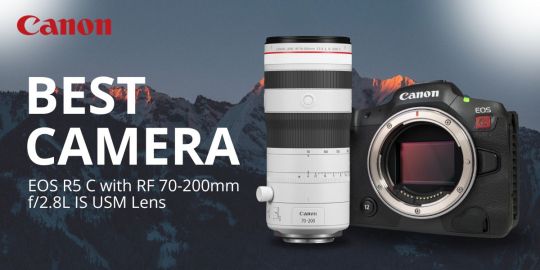
In the ever-evolving world of photography, the right equipment can significantly impact creativity and efficiency. The Canon EOS R5 C and the RF 70-200mm F2.8 L IS USM Lens are two standout products that cater to both professional photographers and videographers. Available at AWPRO in Dubai, these pieces of equipment promise to enhance your shooting experience while addressing common challenges faced by photographers.
Canon EOS R5 C Powerhouse
The Canon EOS R5 C is a groundbreaking mirrorless cinema camera that excels in both still photography and video recording. With a full-frame sensor boasting 45 megapixels, it captures stunning images with exceptional detail. Here are some key features:
8K RAW Video Recording: The R5 C allows for internal recording of 8K video at up to 60 frames per second, making it ideal for filmmakers seeking high-resolution footage.
Dynamic Range: With an impressive 15 stops of dynamic range, this camera provides excellent detail in shadows and highlights, crucial for dynamic scenes.
Autofocus System: Utilizing Dual Pixel CMOS AF II, it offers fast and accurate focusing, essential for capturing moving subjects.
Challenges and Solutions:
Heat Management: Extended recording times can lead to overheating. The R5 C includes a built-in cooling fan, enabling non-stop 8K recording without interruptions
Weight Considerations: Weighing around 1.7 pounds, it is relatively lightweight for a full-frame camera, but can still feel cumbersome during long shoots. Pairing it with lighter lenses like the RF 70-200mm can help alleviate this issue.
RF 70-200mm F2.8 L IS USM Lens Versatility in a Compact Design
The RF 70-200mm F2.8 L IS USM Lens is renowned for its versatility across various photography genres, from portraits to sports. Its design is notably 27% shorter and 28% lighter than its EF counterpart, enhancing portability without sacrificing performance.
Key Features:
Image Stabilization: With up to 5 stops of image stabilization, this lens ensures sharp images even in low-light conditions or during handheld shooting.
Custom Control Ring: A unique feature of RF lenses is the customizable control ring on the barrel, allowing photographers to adjust settings intuitively while shooting.
Challenges and Solutions:
Limited Zoom Range: While the 70-200mm range is versatile, some may find it limiting for specific scenarios. Adding a teleconverter can extend its reach without compromising image quality.
Bokeh Quality: Achieving beautiful bokeh can be challenging with zoom lenses. However, the large f/2.8 aperture allows for stunning background blur, making it suitable for portrait photography.
Impact on Photographers
Both the Canon EOS R5 C and RF 70-200mm F2.8 L IS USM Lens significantly enhance a photographer's toolkit:
Convenience: Their compact designs make them easy to carry, allowing photographers to shoot longer without fatigue.
Quality Output: The combination of high-resolution imaging and advanced autofocus systems results in professional-grade photos and videos.
Creative Flexibility: With capabilities spanning various formats and settings, these tools empower photographers to explore their creativity without limitations.
Where to Buy
For those in Dubai looking to elevate their photography game, both products are available at AWPRO. This reputable retailer offers competitive pricing and expert advice on camera gear.
Conclusion
Investing in the Canon EOS R5 C and RF 70-200mm F2.8 L IS USM Lens can transform your photography experience on AWPRO, providing solutions to common challenges while enhancing your creative potential. Whether you’re capturing breathtaking landscapes or dynamic action shots, these tools are designed to meet the demands of modern photographers.
0 notes
Text
Cinematography Article Write-up - Exercise 2
Magazine: American Cinematographer Issue: February 2023 Article: Hollywood Babylon By Jay Holben
Babylon is one of my all time favourite films, and the cinematography is a huge, huge part of that. The film is the epitome of the every frame a painting mentality of some filmmakers, including apparently director Damien Chazelle and director of photography Linus Sandgren. Both of whom previously collaborated on La La Land.
The descision to use anamorphic lenses and film to create a wider frame full of richer colour really works in Babylon's favour. The film is about capturing the primordial chaos of old Hollywood from which cinema as we know today formed. Sandgren's use of anamorphic format allows a wider horizontal field of view in every shot, capturing more of the background and ensuring even in smaller scenes, allowing the incredible set design and background acting to shine through and create a busy, energetic feeling in the scenes taking place on-set and at the various parties. Inversely, it leaves a far emptier shot in quieter scenes, allowing a subject to sit far more isolated than a narrower shot on a spherical lens allows. It also allows much more of a look at the characters in a two shot, giving both of them ample space on screen, and as the relationship between Nelly and Manny and how the space between them grows and shrinks through the years is a key aspect of the story, this is a really useful visual tool to have.
The use of film allows much more contrast and depth of colour in a frame than digital, allowing a wider dynamic range and more visually pleasing and catching shots. This use of film also follows the theme of old Hollywood, harkening back to older golden age of Hollywood and it's use of Technicolour to create brighter and bolder colour than previously possible. The film uses exaggerated lighting in many of it's scenes, and the use of film allows the highlights and shadows to really show through, giving a huge amount of control over the focus of the image to the cinematographer and director and giving the gaffer room to really show off.
The film also uses several long takes, and frequently uses steadicam and crane shots to pass through large environments in continuous motion. This captures a huge sense of scale and energy, especially in the early grand party scene. Huge amounts of extras and set design can be shown off to prove the scale and sell the idea of the grandeur of Hollywood. The characters are frequently in motion, and steadicams follow them solidifying them as the point of focus in a constantly moving and changing enviroment, giving the audience. sense of direction and an easy way to follow the story through the wide enviroments. The showcasing of individual characters and the chaos around them emphasises the dizzying speed at which Manny , Sidney and Nelly find themselves in the middle of one of the fastest changing era's and environments of modern human history.
Babylon is bold and busy, and the wide lenses and deep colour offered by recording on 35mm film emphasise and support this theming. The use of extended steadicam and crane shots further immerse the audience in the centre of the action and give the film a sense of life. All of the films elements collect to give this idea of life, of constant motion and change. No matter the era, the frame is full of life and colour.
0 notes
Text
Top 35mm Filmmaking Camera: Best Options for Cinematic Quality
The 35mm filmmaking camera has long been a staple in the film industry, thanks to its unique ability to deliver high-quality, cinematic visuals that stand out on the big screen. Whether you’re an experienced professional or an aspiring filmmaker, choosing the right 35mm filmmaking camera can elevate your production to new heights. Here’s a detailed guide to understanding what makes 35mm cameras so special, along with some of the best options available today.
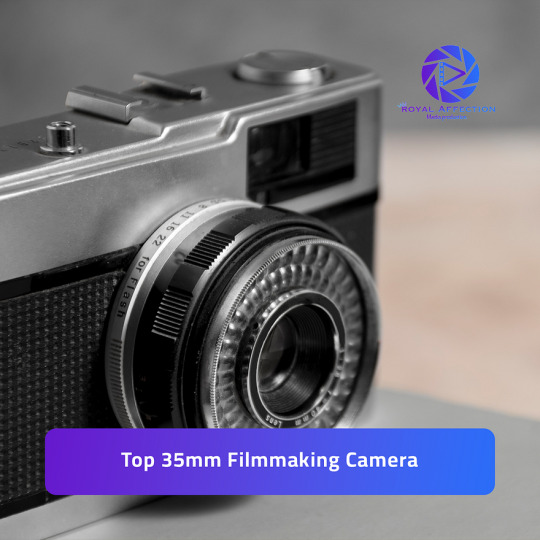
What is a 35mm Filmmaking Camera?
A 35mm filmmaking camera traditionally uses 35mm film or a digital sensor that replicates the aesthetic and characteristics of 35mm film. The term “35mm” refers to the width of the film strip or the sensor size, which impacts the field of view, depth of field, and image quality. These cameras are known for their high resolution, rich color depth, and excellent dynamic range, making them ideal for capturing cinematic footage.
Why Choose a 35mm Filmmaking Camera?
Cinematic Quality: 35mm cameras provide a shallow depth of field, rich colors, and impressive dynamic range, giving footage a professional and polished look.
Versatility: They are compatible with a variety of lenses, allowing filmmakers to adapt to different shooting styles and environments.
Dynamic Range: 35mm cameras capture a broader range of tones and details, especially in challenging lighting conditions.
Post-Production Flexibility: These cameras often support multiple recording formats (e.g., RAW, ProRes), making it easier to adjust colors, exposure, and other elements during editing.
Top 35mm Filmmaking Cameras for Professional Use
Here are some of the top 35mm filmmaking cameras, known for their outstanding performance and features:
1. ARRI Alexa Mini LF
The ARRI Alexa Mini LF is a digital 35mm camera renowned for its exceptional image quality and compact design. It features a large format sensor that delivers 4.5K resolution with incredible dynamic range and color accuracy.
Key Features:
4.5K large-format sensor
14+ stops of dynamic range
Compact and lightweight design
Supports ARRI Signature Primes and other PL mount lense
The Alexa Mini LF is highly favored by professional filmmakers for high-end productions, including feature films and commercials, due to its outstanding image quality and flexibility.
2. RED Digital Cinema KOMODO 6K
The RED KOMODO 6K is a compact powerhouse that delivers stunning 6K resolution, making it perfect for a variety of filmmaking applications. It features a Super 35mm global shutter sensor, which eliminates the rolling shutter effect, ensuring smooth and crisp images.
Key Features:
6K Super 35mm global shutter sensor
16+ stops of dynamic range
Compact and rugged design
REDCODE RAW recording for enhanced post-production flexibility
This camera is ideal for filmmakers who need a lightweight, portable option without compromising on image quality.
3. Canon EOS C300 Mark III
The Canon EOS C300 Mark III is a robust cinema camera with a Super 35mm Dual Gain Output (DGO) sensor, providing exceptional image quality and dynamic range. It is widely used in professional environments, offering versatility for different types of productions.
Key Features:
4K Super 35mm DGO sensor
16+ stops of dynamic range
Internal RAW recording and 10-bit XF-AVC formats
Modular design with interchangeable mounts
The C300 Mark III is ideal for documentary filmmaking, commercials, and narrative work that requires high-quality footage and flexible recording options.
4. Sony FX6
The Sony FX6 is a full-frame 35mm camera that offers impressive low-light performance, making it an excellent choice for documentary and indie filmmakers. It’s equipped with a 4K sensor and a variety of professional features, such as advanced autofocus and real-time eye detection.
Key Features:
Full-frame 4K sensor
15+ stops of dynamic range
Real-time Eye AF and Face Detection
Compact and lightweight body
The FX6 is designed for versatility and portability, making it an excellent option for filmmakers who need to shoot on location or in dynamic environments.
5. Blackmagic URSA Mini Pro 12K
The Blackmagic URSA Mini Pro 12K features a groundbreaking 12K resolution with a Super 35mm sensor, offering unparalleled image quality. It is perfect for filmmakers who need the highest possible resolution for advanced post-production work and visual effects.
Key Features:
12K Super 35mm sensor
14 stops of dynamic range
Built-in ND filters and high frame rate recording
12K RAW and ProRes recording options
The URSA Mini Pro 12K is ideal for high-end productions and projects that require the utmost flexibility in post-production.
Key Features to Consider in a 35mm Filmmaking Camera
When selecting the best 35mm filmmaking camera, consider these essential features:
Sensor Size and Resolution: Look for a Super 35mm or full-frame sensor with high resolution (e.g., 4K, 6K, or higher) for detailed and sharp images.
Dynamic Range: Cameras with 14+ stops of dynamic range offer greater flexibility in capturing detail in both highlights and shadows.
Recording Formats: Support for multiple recording formats, such as RAW and ProRes, provides more control over image quality and post-production.
Lens Compatibility: Choose a camera compatible with a variety of professional lenses, such as PL, EF, or E-mount, for maximum versatility.
Build Quality and Design: Consider cameras with robust build quality, weather sealing, and ergonomic designs for demanding production environments.
Conclusion
Choosing the best 35mm filmmaking camera involves evaluating sensor size, resolution, dynamic range, recording formats, and lens compatibility. The options listed above, from the ARRI Alexa Mini LF to the Blackmagic URSA Mini Pro 12K, offer exceptional performance and image quality for filmmakers. By investing in a high-quality 35mm camera, you can elevate your work to new cinematic heights and create stunning visuals that resonate with audiences.
For expert advice and more information on choosing the right 35mm filmmaking camera, feel free to reach out for personalized recommendations.
🔗Read More: https://royalaffectionmedia.com/35mm-filmmaking-camera/
0 notes
Text
Elevate Your Cinematic Vision with ARRI Signature Prime and ARRI Master Anamorphic Prime Rental in Los Angeles
Introduction:
In cinematography, equipment is pivotal in bringing creative visions to life. Professionals turn to renowned brands like ARRI when achieve unparalleled image quality and cinematic excellence. The ARRI Signature Prime and ARRI Master Anamorphic Prime lenses have become synonymous with top-tier cinematography, offering filmmakers the tools they need to capture breathtaking visuals. For those seeking these cutting-edge lenses for their projects, ARRI Signature Prime rental and ARRI Master Anamorphic Prime rental in Los Angeles provide a flexible and cost-effective solution.
ARRI Signature Prime Rental:
The ARRI Signature Prime lenses are revered for their exceptional optical performance, delivering stunning clarity, rich colors, and a distinctive look that sets them apart. These lenses are designed to cover large-format sensors, ensuring compatibility with the latest digital cinema cameras. Whether you are working on a feature film, commercial, or documentary, the ARRI Signature Prime lenses elevate your visual storytelling to new heights.
For filmmakers looking to explore the capabilities of ARRI Signature Prime lenses without the commitment of a purchase, ARRI Signature Prime rental services in Los Angeles offer a practical solution. This allows cinematographers to access these high-end lenses for specific projects, providing the flexibility to choose the right equipment for the job.
ARRI Master Anamorphic Prime Rental in Los Angeles:
Anamorphic lenses have long been favored for producing a unique cinematic aesthetic characterized by striking flares and a distinctive widescreen format. The ARRI Master Anamorphic Prime lenses take this legacy further, providing unparalleled image quality and precise optical performance. These lenses are famous for filmmakers aiming to achieve a timeless and cinematic look that enhances the storytelling experience.
In the vibrant landscape of Los Angeles, where creativity thrives, the option of ARRI Master Anamorphic Prime rental Los Angeles is a game-changer for filmmakers. It allows them to access these top-of-the-line lenses for their projects without the upfront investment, making high-quality cinematic tools more accessible to a broader range of creatives.
Choosing the Right Rental Service:
When considering ARRI Signature Prime rental or ARRI Master Anamorphic Prime rental in Los Angeles, choosing a reliable and reputable rental service is crucial. PannyHire is a leading provider of professional cinematography equipment, offering a wide range of ARRI lenses for rent. With a commitment to quality and customer satisfaction, PannyHire ensures filmmakers can access the best equipment to bring their visions to life.
Conclusion:
In cinematography's dynamic world, access to top-tier equipment is essential for realizing creative visions. The availability of ARRI Signature Prime and ARRI Master Anamorphic Prime rental services in Los Angeles opens up new possibilities for filmmakers, allowing them to leverage cutting-edge technology without the burden of ownership. For those seeking a trusted rental service in Los Angeles, pannyhire.com stands out as a reliable partner, offering a diverse range of ARRI lenses to elevate cinematic storytelling. Explore the world of ARRI lenses through rentals and bring your visual narratives to life with unparalleled quality and style.
0 notes
Text
Anaglyphs by Joseph Charles d'Almeida (Paris 1822 – Paris 1880).
I was distantly related to the physicist from Almeida who was a great uncle of my grandfather, what I have left of him are photos representing him...
The first public projections of stereoscopic views were made possible thanks to the invention of Joseph Charles d'Almeida. The latter projects the images through a magic lantern using colored filters and distributes glasses with these same filters (red and green) to the spectators. This invention was perfected and is still used today in the so-called anaglyph process. (1).
In 1858, the French physicist Joseph – Charles d'Almeida invented the first relief slide projection process, anaglyphs. For the selection of left and right images (stereoscopic pair), two complementary colors are used, red and blue (cyan). This process with red and cyan glasses is still used today. (2).
The photographer specializing in stereoscopy, Isaac Georges Lévy (Hégenheim 1833 – 1916 Paris) had his stereoscopic photo workshop in Paris (Cf. Photo from the Roger Viollet Collection), the photographer Roger Viollet cannot be in a paper medium for reasons legal. (3).
During the late 1850's, Joseph Charles d'Almeida had been developing a way to view images in 3 D by using the anaglyph method. He and Louis Ducos Du Hauron (Langon 1837 – 1920 Agen) gave the first anaglyph presentation in 1858, using makeshift color lenses as 3D glasses. (4).
Through Stereoscopy, Laes Anaglyphes, MM Charles d'Almeida, Mr. Georges Lévy and Mr. Gabriel Lppmann (1845 – 1921) are among the pioneers of stereoscopic photography which will give rise to relief films. (5).
Joseph Charles d'Almeida (Paris 1822 - Paris 1880) proposed in 1858 relief projection on screen, in anaglyuph, according to Rollman's process, using two projectors (two "magic lanterns") equipped with red filters and green or yellow and cyan. (6).
In 1858, Joseph Charles d'Almeida, a physics professor at the Lycée Henri IV in Paris, invented a method for showing stereoscopic images to several people at once using a lantern projector equipped with red and blue filters. . Spectators wore red and blue glasses. (7).
Stereoscopy invented by Charles Wheatone in 1838 has many variations but only the process using color filtering, developed by the German Wilhelm Rollman in 1853 and later called anaglyph, makes it possible to print in a single image, which can be of large format, the information necessary for relief vision, which is obtained by means of filter glasses. Charles d'Almeida presented this technique at the Paris Academy of Sciences in July 1858 and was interested in its improvement. His research will open the way to strobostereoscopy, a method applicable to cinema and using the alternation of filtered views of two complementary colors. (8).
Research by Franck d'Almeida.
Source :
(1): Press kit Chamonix d’Antan in 3D (October 18, 2014 – March 29, 2015° Contact: Lucinda Perrillat – [email protected]
(2): https://areq.net/lang/fr/Cin%C3%A9ma_en_relief.html
(3) https://www1.alliancefr.com/actualites/autour-du-photographe-isaac-georges-levy-6050838, article by Franck d’Almeida.
(4) https://id.pinterest.com/pin/during-the-lat-1850s-josph-dalmeida-had-been-developing-a-way-to-view-images-in-3d-by-suing -the-anaglyph-method-h--20336635798181228
(5) http://judaisme.sdv.fr/perso/industrie/glevy/glevy.htm
(6) https://www.image-en-relief.org/stereo/193-glossaire
(7) https://earthobservatory.nasa.gov/blogs/earthmatters/2016/11/21/what-on-earth-is-an-anaglyph. & www.almyimages.fr.photos-images/magic-lantern.html?sortBy=relevant
(8) Text by Franck d'Almeida in the Bulletin of the Friendly Association of Former Students of the Lycée Henri IV. September 2021.
Les Anaglyphes par Joseph Charles d'Almeida (Paris 1822 – Paris 1880).
J'ai eu lointaine parenté avec le physicien d'Almeida qui fut un grand oncle de mon grand père, de ce qu'il me reste de lui c'est des photos le représentant...
Les premières projections, en public, de vues stéréoscopiques sont rendues possibles grâce à l'invention de Joseph Charles d'Almeida. Ce dernier projette les images à travers une lanterne magique utilisant des filtres colorés et distribue aux spectateurs des lunettes disposant de ces mêmes filtres (rouge et vert). Cette invention a été perfectionnée et est encore utilisée aujourd'hui dans le procédé dit anaglyphe. (1).
En 1858, le physicien français Joseph – Charles d'Almeida invente le premier procédé de projection de diapositive en relief, les anaglyphes. Pour la sélection- des images gauche et droite (couple stéréoscopique), deux couleurs complémentaires sont utilisées, le rouge et le bleu (cyan). Ce procédé à lunettes rouge et cyan est encore actuellement utilisé. (2).
Le photographe spécialisé en stéréoscopie, Isaac Georges Lévy (Hégenheim 1833 – 1916 Paris) avait son atelier de photo stéréoscopique à Paris (Cf. Photo de la Collection Roger Viollet), la photographe Roger Viollet ne peut pas être dans un support papier pour des raisons juridiques. (3).
During the late 1850's, Joseph Charles d'Almeida had been developping a way to view images in 3 D by using the anaglyph method. He and Louis Ducos Du Hauron (Langon 1837 – 1920 Agen) gave the first anaglyph presentation in 1858, using makeshift color lenses as 3D glasses. (4).
Par la Stéréoscopie, laes Anaglyphes, MM Charles d'Almeida, M. Georges Lévy et M. Gabriel Lppmann (1845 – 1921) font partie des pionniers de la photographie stéréoscopique qui donnera naissance aux films en reliefs. (5).
Joseph Charles d'Almeida (Paris 1822 – Paris 1880) a proposé en 1858 la projection en relief sur écran, en anaglyuphe, selon le procédé de Rollman, à l'aide de deux projecteurs ( deux « lanternes magiques ») équipés de filtres rouge et vert ou jaune et cyan. (6).
En 1858, Joseph Charles d'Almeida, professeur de physique au Lycée Henri IV à Paris, a inventé une méthode permettant de montrer des images stéréoscopiques à plusieurs personnes à la fois à l'aide d'un projecteur lanterne équipé de filtres rouges et bleues . Les spectateurs portaient des lunettes rouges et bleues. (7).
La stéréoscopie inventée par Charles Wheastone en 1838 connaît de nombreuses variantes mais seul le procédé utilisant un filtrage des couleurs, élaboré par l'allemand Wilhelm Rollman en 1853 et plus tard appelé anaglyphe, permet d'imprimer en une seule image, qui peut être de grand format, l'information nécessaire à une vision en relief, que l'on obtient au moyen de lunettes filtrantes. Charles d'Almeida présente cette technique à l'Académie des Sciences de Paris en juillet 1858 et s'intéresse à son perfectionnement. Ses recherches vont ouvrir la voie de la strobostéréoscopie, méthode applicable au cinéma et utilisant l'alternance de vues filtrées de deux couleurs complémentaires. (8).
Recherche par Franck d'Almeida.
Source :
(1) : Dossier de presse Chamonix d'Antan en 3D (18 octobre 2014 – 29 mars2015° Contact : Lucinda Perrillat – [email protected]
(2) : https://areq.net/lang/fr/Cin%C3%A9ma_en_relief.html
(3) https://www1.alliancefr.com/actualites/autour-du-photographe-isaac-georges-levy-6050838 , article par Franck d'Almeida.
(4) https://id.pinterest.com/pin/during-the-lat-1850s-josph-dalmeida-had-been-developping-a-way-to-view-images-in-3d-by-suing-the-anaglyph-method-h--20336635798181228
(5) http://judaisme.sdv.fr/perso/industrie/glevy/glevy.htm
(6) https://www.image-en-relief.org/stereo/193-glossaire
(7) https://earthobservatory.nasa.gov/blogs/earthmatters/2016/11/21/what-on-earth-is-an-anaglyph. & www.almyimages.fr.photos-images/magic-lantern.html?sortBy=relevant
(8) Texte de Franck d'Almeida dans le Bulletin de l'Association Amicale des Anciens Elèves du Lycée Henri IV . Septembre 2021.
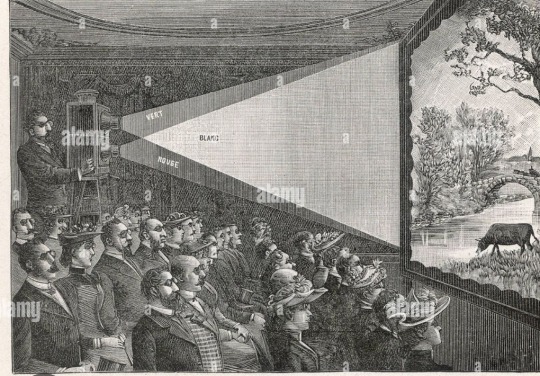
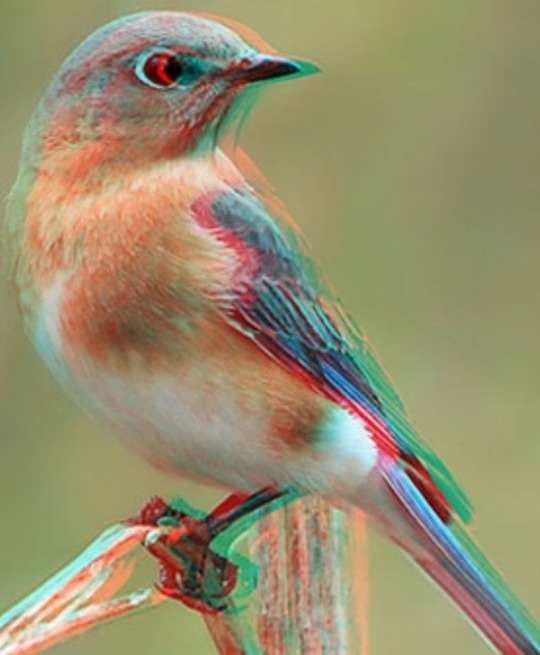
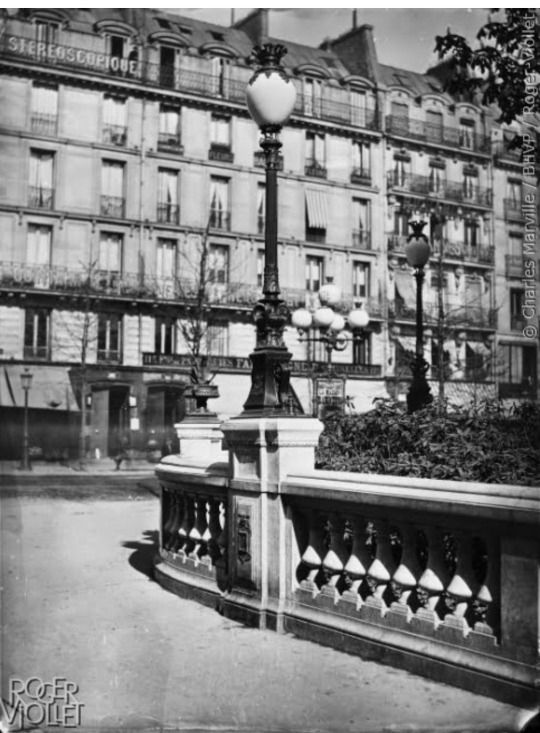
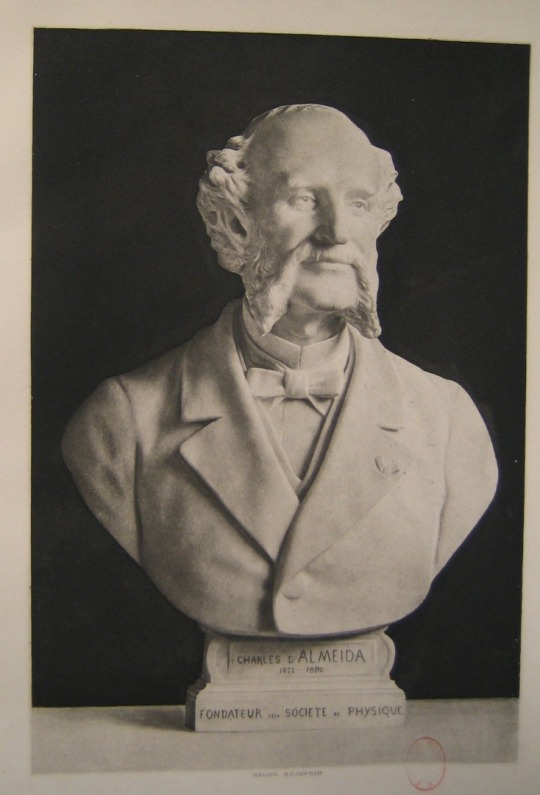
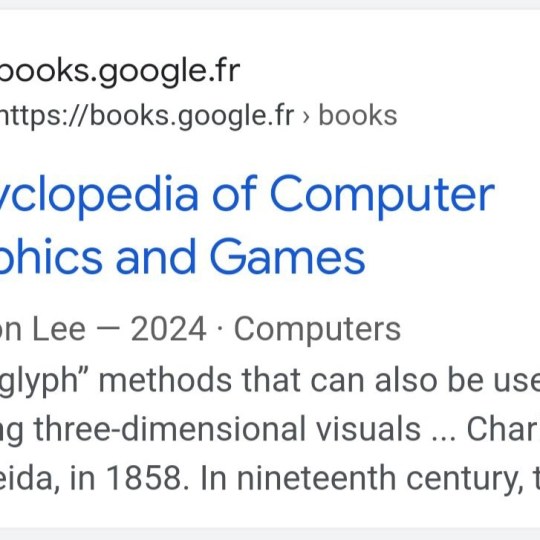
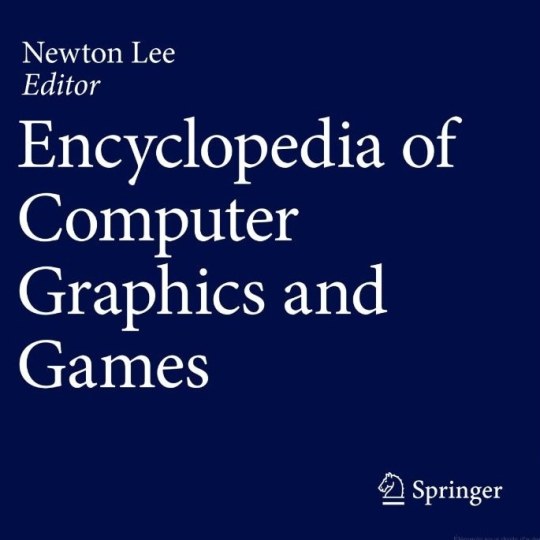
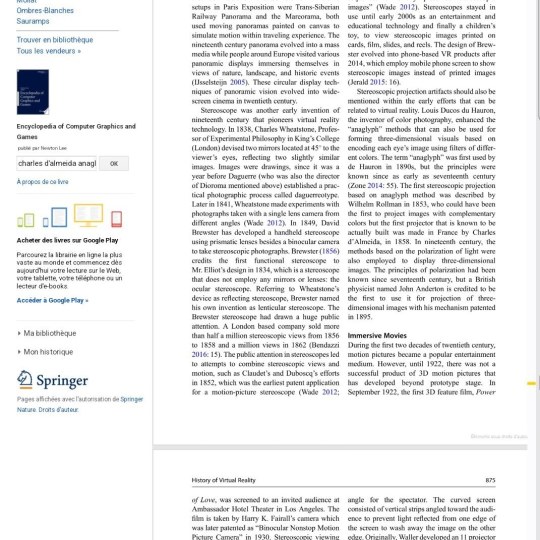
Envoyé depuis l'application Mail Orange
#Fédérationfrancaisedephotographie#Societefrancaisedephotographie#nasa#edpsciences#cnrs#societefrancaisedephysique
0 notes
Text
'The first atomic bomb blast – the Trinity test in the New Mexico desert on July 16, 1945 – was such a terrifying experience that one observer thought something had gone wrong, and the whole world has gone up in flames.
J. Robert Oppenheimer, the theoretical physicist behind the development of the bomb, later recalled thinking of a line from Hindu scripture as he watched the tremendous flash and column of rising smoke: “Now I am become death, the destroyer of worlds”.
Recreating the blast for Christopher Nolan’s epic biopic Oppenheimer, which tells the story of the lead-up to, and aftermath of, the Trinity test largely fell to visual effects supervisor Andrew Jackson, who is currently back home in Australia working on George Miller’s Furiosa.
Jackson has worked on three films in a row with Nolan – Dunkirk, Tenet and Oppenheimer – using the skills he developed growing up on a Cornwall farm to find practical solutions to filmmaking problems.
Such as how to make a building simultaneously implode and explode for Tenet and how to build an atomic bomb for Oppenheimer.
Jackson knew that Nolan would want to recreate the blast “in camera” – filming something real – rather than with computer-generated visual effects.
“He wanted to do this film without using a CG [computer generated] mushroom cloud simulation,” he says. “He wanted it to have a really earthy, gritty feel.”
As Nolan has said, “I’d done a nuclear blast via computer graphics in The Dark Knight Rises, which had worked very well for that film. But it also showed me that with a real event like Trinity, which was well-documented using new cameras and formats developed for recording that event, computer graphics would never give you the sense of threat that you see in the real-life footage.”
Nolan also wanted to film the blast as near as possible to Trinity’s location to make the scene feel real, firstly for the cast headed by Cillian Murphy as Oppenheimer then for the cinema audience.
While they had permission to shoot at what was then called White Sands Proving Ground, the site is still a military base for practice bombing runs and radar tests. So, the crew built their own version elsewhere in New Mexico, complete with the tall steel tower used for Trinity.
After cinematographer Hoyte Van Hoytema set up cameras in positions simulating the real-life observation points, the crew set off what Jackson remembers as seven or eight explosions, with high explosives underneath barrels of fuel that were launched skywards to create a mushroom cloud.
“We filmed them from lots of cameras,” Jackson says. “So we had a lot of footage at different frame rates and different lenses. We had close detail of that turmoil inside the roiling flame of the explosion.”
They shot these explosions at high speed, slowed them down then brought layers of footage together in post-production.
“They were really just big explosions that we treated in a way to make them feel much bigger than they really were,” Jackson says. “Everything was done very safely and controlled.”
The result is impressive in Oppenheimer, a blast that is both strangely beautiful and horrifying, especially knowing that atomic bombs will devastate Hiroshima and Nagasaki within weeks.
The other big visual effects job on Oppenheimer was representing what Nolan has described as “the thought processes of somebody at the forefront of the paradigm shift from Newtonian physics to quantum mechanics”.
Jackson says he spent two months in special effects supervisor Scott Fisher’s workshop experimenting - “coming up with little devices and trying spinning things and magnets and powders and liquids and flames, looking for things that related to chain reactions and waves and particles and the surfaces of stars”.
They filmed hundreds of clips to create a library of images.
“Some of them could just be cut straight into the film with no work,” Jackson says.
They also had to come up with ways of representing everything from subatomic particles to galaxies, including black holes and stars forming.
Jackson, who was nominated for an Oscar for Mad Max: Fury Road and won one for Tenet, is the creative director of the new Sydney office of international visual effects and animation house DNEG. He describes Nolan as a brilliant filmmaker with a clear vision of what he wants.
“He’s very good at delegating and giving people the freedom to experiment and find solutions,” he says.'
#Andrew Jackson#Christopher Nolan#Oppenheimer#Cillian Murphy#Hoyte van Hoytema#Tenet#Mad Max: Fury Road#Scott Fisher#White Sands Proving Ground
1 note
·
View note
Text
HND1 Photography Report Task: Capture & Output
DIGITAL CAMERA SENSORS A digital camera uses an array of millions of tiny light cavities or "photosites" to record an image. When you press your camera's shutter button and the exposure begins, each of these is uncovered to collect photons and store those as an electrical signal. Once the exposure finishes, the camera closes each of these photosites, and then tries to assess how many photons fell into each cavity by measuring the strength of the electrical signal. The signals are then quantified as digital values, with a precision that is determined by the bit depth. The resulting precision may then be reduced again depending on which file format is being recorded (0 - 255 for an 8-bit JPEG file).
Digital Camera Sensor Types Medium Format Medium format is the largest sensor type in digital cameras for photographic applications. However, it doesn’t come in just one size. Medium format has its own group of sensors, with its own equivalents to the four thirds, APS-C, and full-frame formats. There are a variety of sensor sizes for medium-format cameras, and typical sizes range from around 43.8×32.9mm to 53.7×40.2mm.
Due to their large image sensors, medium-format DSLR cameras are traditionally heavier and bulkier than their full-frame counterparts. But that changed, as brands like Hasselblad have come out with smaller mirrorless medium-format cameras like the X1D II to provide photographers with a lighter, more compact option. The newer Fujifilm GFX 100 is also a medium-format mirrorless camera and holds a whopping 102MP resolution.
35mm Full-Frame Full-frame sensors are available in both DSLR and mirrorless cameras. They have the same dimensions as the 35mm film, hence the name. The 35mm full-frame sensor type is the gold standard among professional photographers who want the highest-quality images.
The dimensions of a 35mm sensor are typically 36×24mm.
The Canon EOS R5, for example, is a full-frame mirrorless camera option, and the popular Nikon D850 DSLR has a FX full-frame sensor.
APS-H The groundbreaking EOS-1D was the first Canon camera to carry the APS-H sensor type was, and it launched in 2001. Canon released four more cameras (all members of the 1D line) with the same sensor type before discontinuing it.
The APS-H is slightly larger than the APS-C sensor format that many Canon DSLR cameras use today but smaller than a traditional full-frame sensor.
APS-C The APS-C or crop-sensor format is the most well-known and most versatile of the bunch. The APS-C sensor is popular in DSLR and mirrorless cameras alike. Beginners and professionals alike use it thanks to its adaotability.
The typical APS-C sensor size is different across camera brands. Canon APS-C sensors are usually 22.3×14.9mm, while other brands like Nikon, Sony, Pentax, and more usually feature APS-C sensors with 23.6×15.6mm dimensions. Many cameras including the Canon EOS M50 Mark II, Fujifilm X100V, Sony Alpha a6600, and Nikon Z50 all hold APS-C sensors
Four Thirds/Micro Four Thirds Created by Olympus and Panasonic, the Four Thirds System is a standard that allows for the compatibility of lenses and bodies across participating camera makers. Image sensor size is 17.3×13mm with a crop factor of 2.0 when compared to full-frame camera sensors.
On the mirrorless camera side, we have the Micro Thirds Format System, first released in 2008. It shares the Four Thirds System’s sensor size and specifications but uses a compact design with no space for the movable mirror, pentaprism, and other parts of the DSLR mechanisms not found in mirrorless cameras.
The Four Thirds System uses a 4:3 image aspect ratio, hence the name, and is featured in cameras like the Blackmagic Design Pocket Cinema Camera 4K. The Micro Four Thirds System uses the same ratio but can also record 16:9, 3:2, and 1:1 formats, and is included in cameras like the Olympus OM-D E-M1 Mark III and Panasonic Lumix G9.
1” Type (and below) Any sensor that is about 1.5 to 1-inch in size or smaller can be found in non-interchangeable lens cameras (your typical point and shoot) and smartphone cameras.
High-end compact cameras like the Panasonic Lumix DMC-LX10 and the Sony Cyber-Shot DSC-RX10 IV use 1-inch sensors, allowing these cameras to produce good results—in terms of image and video quality—that you won’t get with regular point-and-shoot cameras.
Dynamic Range
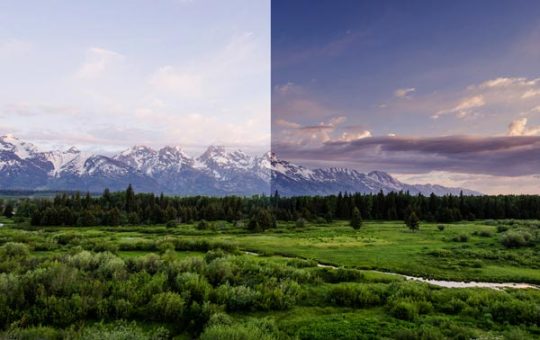
If you’ve ever had to take a photograph on a bright sunny day, chances are pretty high that you would have lost detail, possibly in the shadows or in the highlights, perhaps even both. This is not an exposure problem on your part, it’s more likely a limitation of the dynamic range of your camera – almost all cameras will come up against this problem at some time.
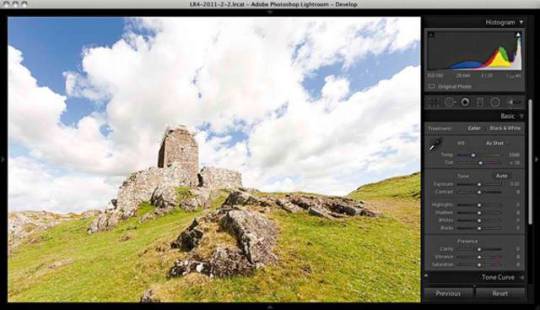
Notice the sky is lacking in detail. It is over exposed – outside of the range of the camera. There are actually two dynamic ranges you need to think about. One is the dynamic range of the subject, the second is the dynamic range of your camera. The dynamic range of the subject is a measure of the range of light intensities from the shadows to the highlights. In low light conditions the dynamic range (that is the difference between the darkest and the latest part of the subject) is quite small. On a bright sunny day that range is much higher and is often outside the range of the camera. Different cameras and different sensors will have bigger or smaller dynamic ranges. As long as the dynamic range of the subject doesn’t exceed the dynamic range of your camera you will be able to get a perfectly exposed photograph.
If the subject dynamic range is bigger than the cameras dynamic range and one part of your subject will be either under or over exposed. You can easily tell if the subject’s dynamic range exceeds that of your camera by using the histogram on your rear screen.
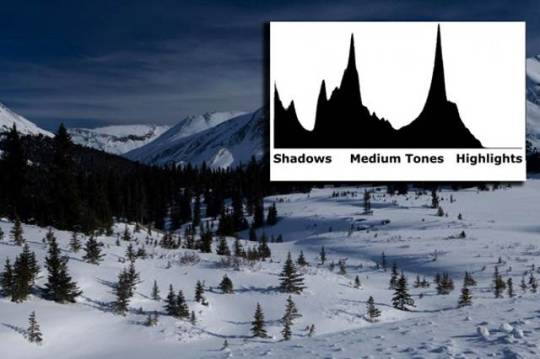
The histogram shows the range of subject brightness starting with black on the left going to white on the right. The width of the histogram chart represents the dynamic range of your camera sensor.
If the histogram fits inside of the histogram display area then the dynamic range of the subject is inside that of your camera and everything is good. If the histogram is clipped at either end then the subject range is too wide. Try changing your camera exposure and watch the histogram move left or right and see if you can fit the histogram inside of the display.
On the histogram shown you can see you can see the shadow area is outside of the sensor’s ability to register. The signal is “clipped” with no details being recorded. The left side of the histogram is crammed up tight against the edge, showing lack of detail.
On the right of the histogram there is still room – the photographer could open up the iris (or use a slower shutter speed) and get more detail in the shadow area without sacrificing detail in the highlights.
Be careful not to over expose the highlights!
A blown out highlight looks terrible whereas a shadow lacking detail is acceptable.
If the subject’s dynamic range is too big and will not fit in histogram and then you need to choose where you will lose information. Ninety-nine percent of the time a photograph that is exposed so the highlights have full detail and the shadows just go black with no detail is a much better option and gives a much more pleasing photograph than one where there is full detail in the shadow but where the highlights are completely burned out.
The almost golden rule is “expose for the highlights,” that is, expose so the highlights are not clipped. Shadows by definition are dark and it is hard to see detail there, so, if you have to loose a portion of the dynamic range it is almost always preferable to loose in the shadows.
There are ways to lift shadows – consider using a fill in flash or a reflector to lighten up those areas if they are close enough to the flashgun that it would have an effect.
Another option – and always a good piece of equipment to have in your camera kit – is to use a graduated neutral density (ND) filter.
BIT DEPTH
Bit depth is one of the most fundamental and important parameters you're likely to come across in photography and videography. This great video will give you a quick introduction to what bit depth is and why it matters to your work.
Coming to you from ZY Productions, this quick and informative video will teach you about bit depth. Bit depth is essentially how much information your camera can store in each color channel for each pixel. For example, a camera with 8-bit color depth can store a string of eight 0s and 1s in each color channel for each pixel. Since there are two possibilities (0 or 1) in each slot and eight slots overall per channel, that equates to 2^8=256 values per channel. Since there are three overall channels, this equates to (2^8)^3=16,777,216 total colors. Altogether, higher bit depths are better, as they create finer gradations, and this results in smoother transitions between tones. As the video notes, the standard JPEG is 8-bit, whereas raw files are typically 12-bit or 14-bit files. This is by far one of the best reasons to shoot in raw; the massive gain in information you get from those extra bits creates much more post-processing latitude. Check out the video above for more.
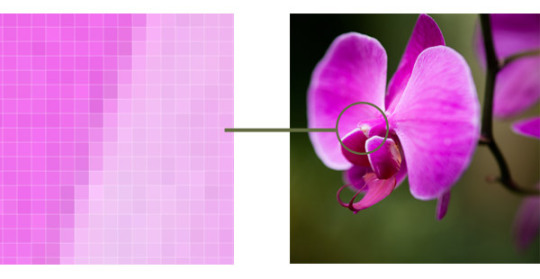
there is some lin with video about bit depth:
https://youtu.be/Z-0hszXbYD0
DIGITAL NOISE
Digital camera image noise
"Image noise" is the digital equivalent of film grain for analogue cameras. Alternatively, one can think of it as analogous to the subtle background hiss you may hear from your audio system at full volume. For digital images, this noise appears as random speckles on an otherwise smooth surface and can significantly degrade image quality. Although noise often detracts from an image, it is sometimes desirable since it can add an old-fashioned, grainy look which is reminiscent of early film. Some noise can also increase the apparent sharpness of an image. Noise increases with the sensitivity setting in the camera, length of the exposure, temperature, and even varies amongst different camera models.
CONCEPT: SIGNAL TO NOISE RATIO
Some degree of noise is always present in any electronic device that transmits or receives a "signal." For televisions this signal is the broadcast data transmitted over cable or received at the antenna; for digital cameras, the signal is the light which hits the camera sensor. Even though noise is unavoidable, it can become so small relative to the signal that it appears to be nonexistent. The signal to noise ratio (SNR) is a useful and universal way of comparing the relative amounts of signal and noise for any electronic system; high ratios will have very little visible noise whereas the opposite is true for low ratios. The sequence of images below show a camera producing a very noisy picture of the word "signal" against a smooth background. The resulting image is shown along with an enlarged 3-D representation depicting the signal above the background noise.
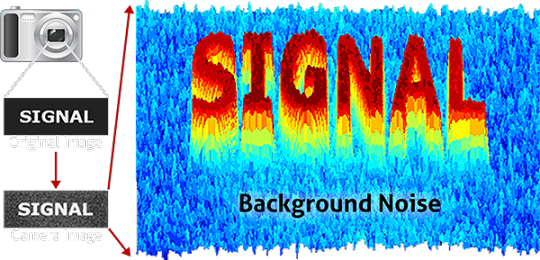
The image above has a sufficiently high SNR to clearly separate the image information from background noise. A low SNR would produce an image where the "signal" and noise are more comparable and thus harder to discern from one another.

ERMINOLOGY: ISO SPEED
A camera's "ISO setting" or "ISO speed" is a standard which describes its absolute sensitivity to light. ISO settings are usually listed as factors of 2, such as ISO 50, ISO 100 and ISO 200 and can have a wide range of values. Higher numbers represent greater sensitivity and the ratio of two ISO numbers represents their relative sensitivity, meaning a photo at ISO 200 will take half as long to reach the same level of exposure as one taken at ISO 100 (all other settings being equal). ISO speed is analogous to ASA speed for different films, however a single digital camera can capture images at several different ISO speeds. This is accomplished by amplifying the image signal in the camera, however this also amplifies noise and so higher ISO speeds will produce progressively more noise.
TYPES OF NOISE
Digital cameras produce three common types of noise: random noise, "fixed pattern" noise, and banding noise. The three qualitative examples below show pronounced and isolating cases for each type of noise against an ordinarily smooth grey background.
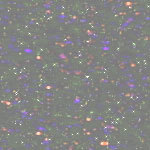
Fixed Pattern Noise Long Exposure Low ISO Speed
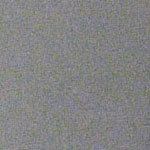
Random Noise Short Exposure High ISO Speed
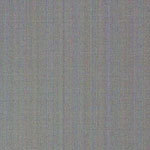
Banding Noise Susceptible Camera Brightened Shadows
2 notes
·
View notes
Text
Photographers: Ricardo Oliveira Alves
Architectural photographer and architect Ricardo Oliveira Alves comes from Lisbon. He already contributed his Forgotten Masterpieces and has many more to share via Architectuul’s Pinterest Board.
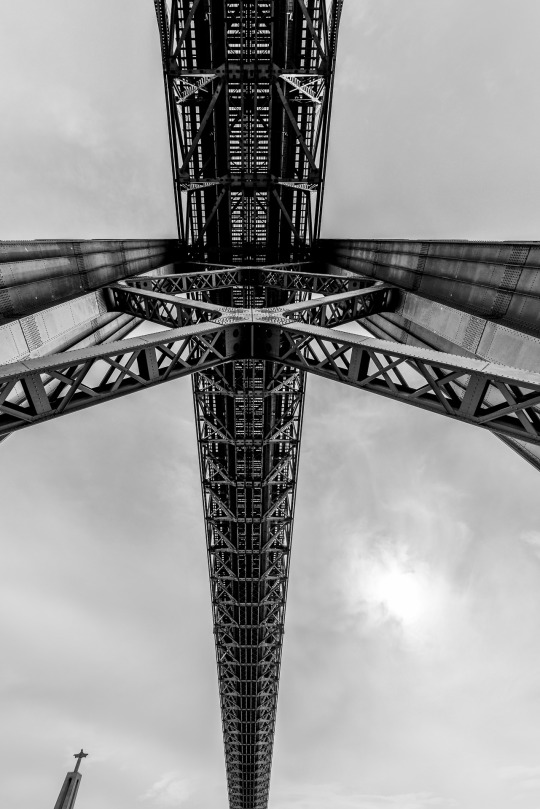
How did you started with architectural photography?
Although I acquired my first camera at the age of 14 and photographing ever since, the architecture training gave me not only technical but also cognitive tools. Architectural photography is something that comes up as an extension of the professional activity and one of the main reasons to be succeeded is due to that knowledge.
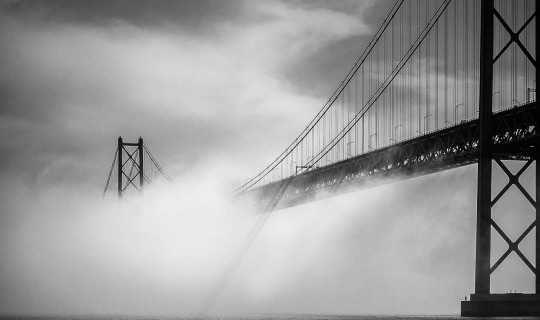
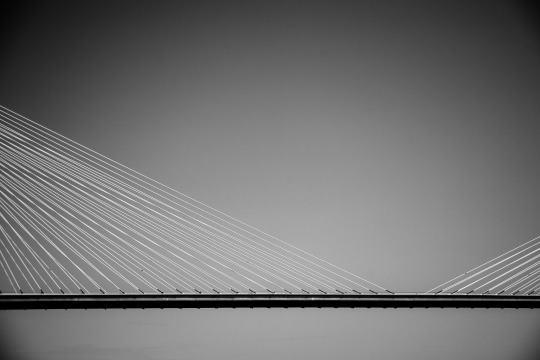
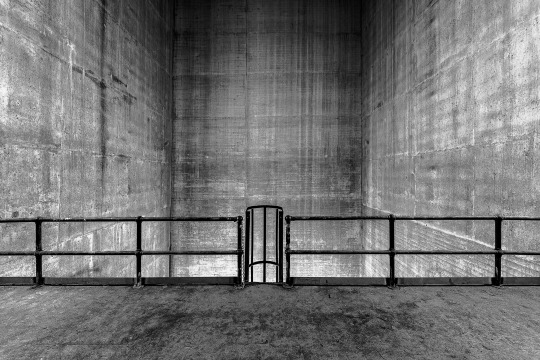
I began with architecture photography when I worked with Samuel Torres de Carvalho. Himself, a great lover of art and a great photographer, pushed me to shoot his works.
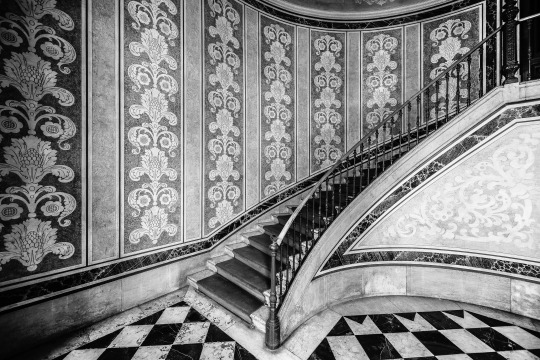
What is the role of photography in architecture?
It remains the most inexpensive and effective way to communicate architecture as holds the value of being an immediate and agile way to bring architecture to people. This is extremely important because it creates a contact with quality architecture, realizing the importance and reason why hiring an architect. The main objective of photography is to communicate, a photographer is therefore an ambassador of architectural dissemination.
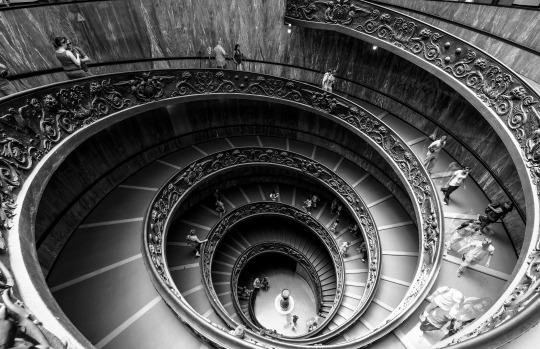
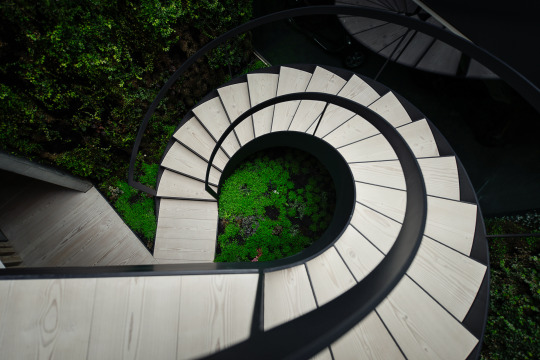
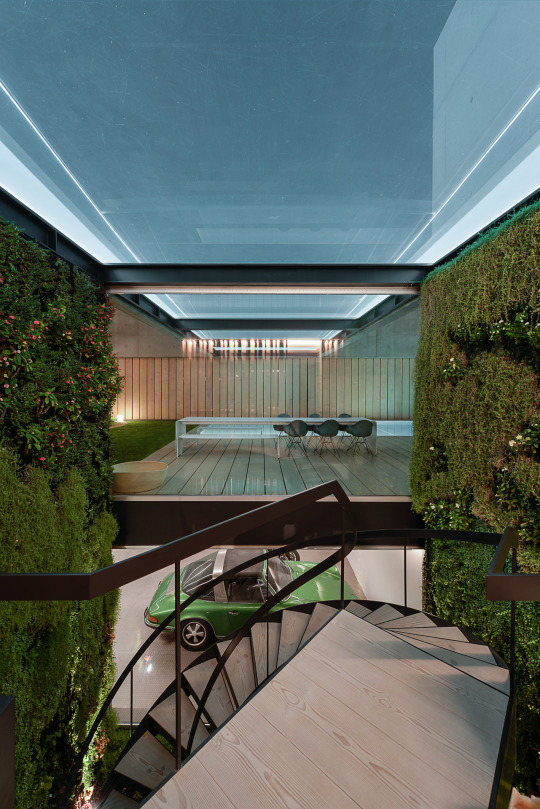
The Wall House is like a wall in a Castle built in concrete, glass and wood.
It is highly reductive to think that one can summarize architecture in photography. Architecture is complex in so many ways, the scent of wood, the density of air, space temperature, the sound of the wider versus tight spaces, the warmness or coldness of light according to the time of the day. These aspects are lost when observing a photo in a two-dimensional way. Therefore I always try to register reality as pure and beautiful as I see, hear and feel.
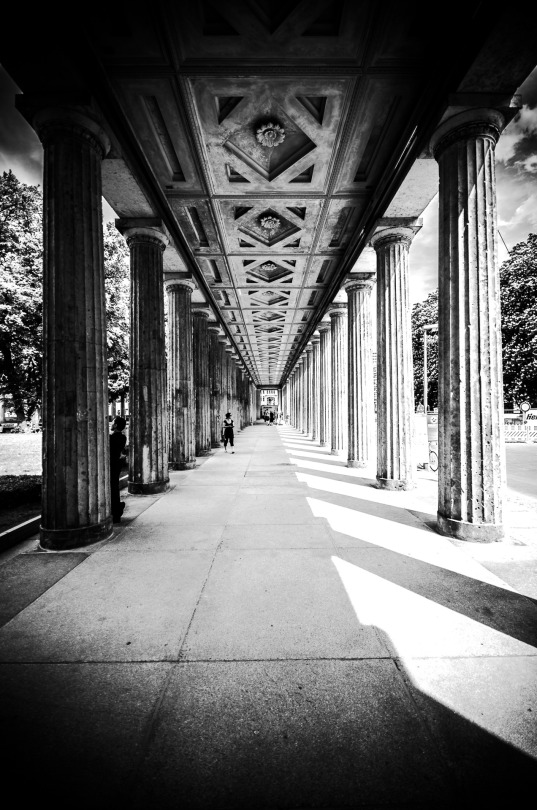
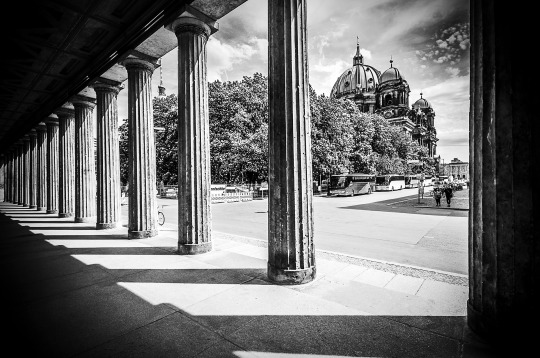
How do you work; which is your approach?
My work is quite simple and direct. The opportunity to plan photo sessions is quite rare because of tight schedules. In many cases I am the first to enter a built project after being completed, sometimes even before its owners.
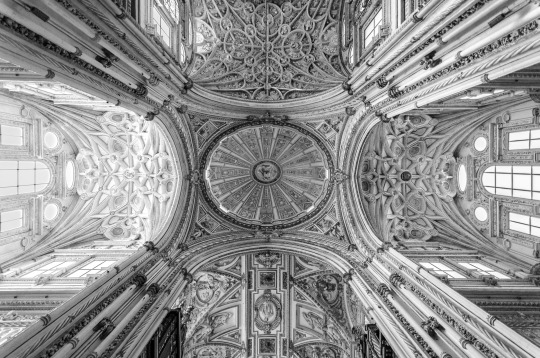
I register space in its natural light, identifying its best qualities. In post-production your senses start to materialize, but our memory can deceive us regarding colors or lights intensity. What matters is to create a tuned sound, like an orchestra tuned in the right rhythm.
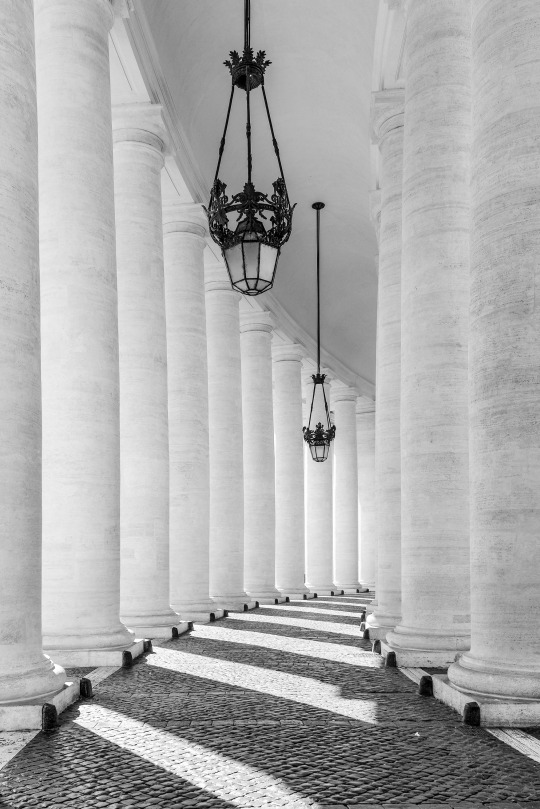
What are the difficulties?
Managing a company is not easy because you have to deal with many bureaucracies. The most complicated is marketing, customer acquisition and working out the strategies to reach clients with whom you intend to work.
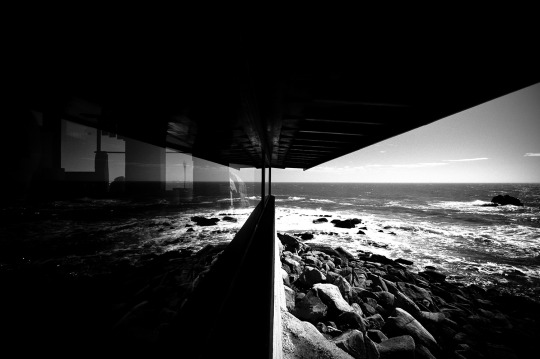
The Siza’s Tea House creates a conversation between nature and people in a dialogue through space, experience and materiality.
There’s insufficient discussion about image licensing. It turns out that fees, applied to image usage endings, are always a theme. As a result the feeling that our work is not recognized gets reinforced. Because clients are paying for our work, they think to possess it and can do whatever they want, share it with whomever they want to.
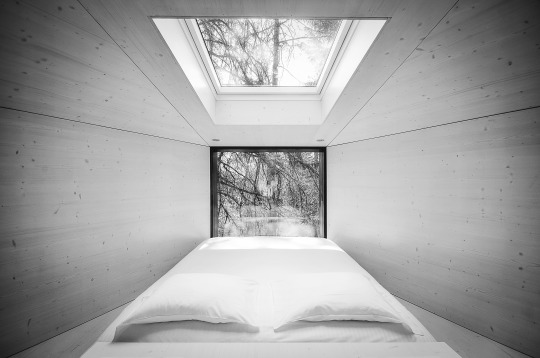
Tree Snake Houses by Luís and Tiago Rebelo de Andrade are away from pre-established concepts associated with the modular construction.
There is a lack of reflection about the financial effort and investment applied in professional material, cameras, lenses, ultra-powerful computers, calibrated monitors, backup discs. Other element that doesn’t help the professionals is the lack of cooperation and deontological code between the photographers themselves, causing great inconvenience to the ones that make their living based on photography and video of architecture alone. Prices keep coming down as new photographers arrive in the market practicing prohibitive fees and in such way destroying the market.
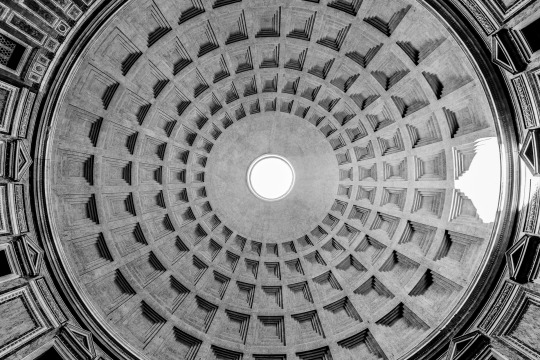
What are you currently working on?
You can reach an exhibition of my work at the Galeria Trema, representing me since 2017. Three years ago I came up with the urge to realize some different approaches to my work. I wanted to materialize photography into a last longing physical piece, something that could be a step towards a return to photographic imagery contemplation. My art pieces are large format photos, printed in black and white upon alucobond (brushed aluminum plates).
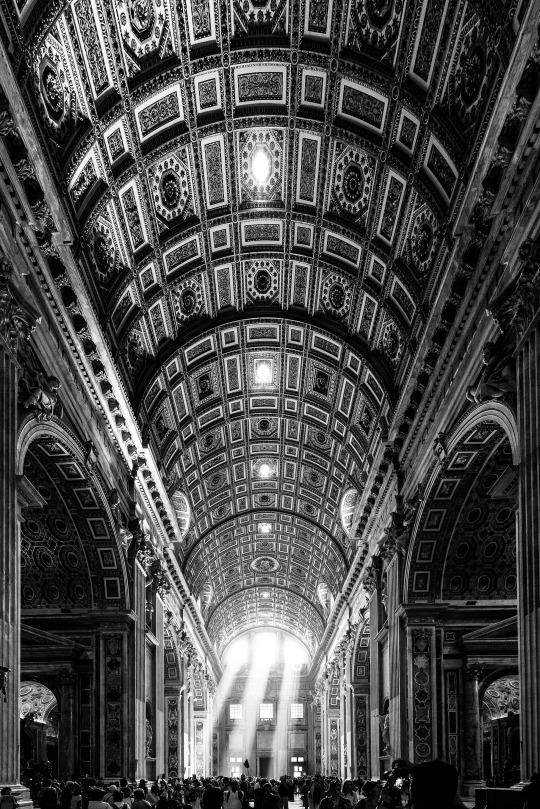
The experience went well and took a direction that has led me to the Venice Architecture Biennial 2016, India (IAD18) and Rome, where I donated my art piece to Pope Francis.
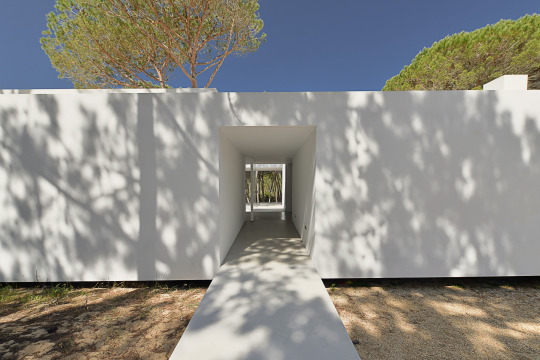
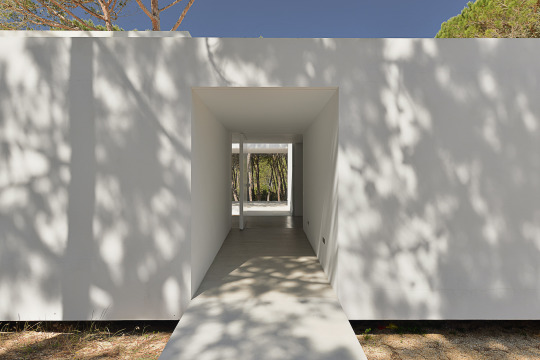
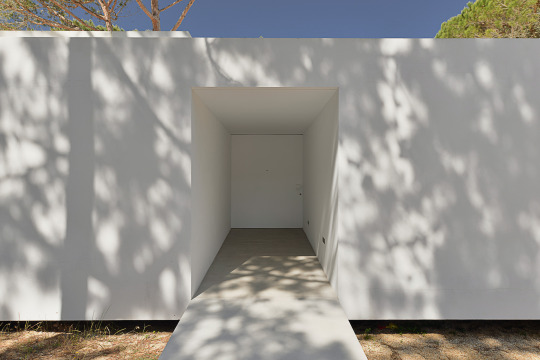
The presence of House Colares defines the plot with sharpe white edges.
Quite recently I shot CTT- Portuguese mail facilities, now I’m registering facilities for OGMA, the aeronautics maintenance repair company. These clients want material for corporate and commercial purposes and I can learn new things from these type of spaces and functions.
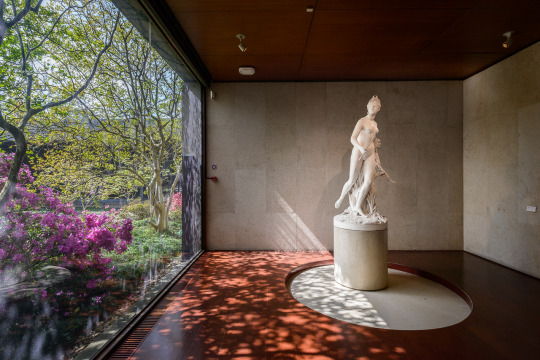
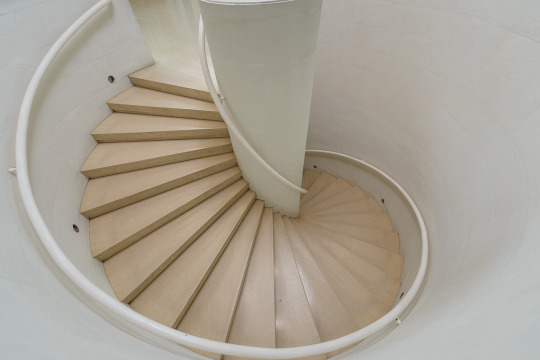
The concrete structures of Gulbenkian Museum are separated but on the other hand interconnected pathways.
What is your inspiration?
My inspiration comes from each space I get to know. There’s a dialectic process between me and the space, a silent dialog that passes on elements to my senses as the relation gets stronger when I dive into the project. It is like someone you just met and you want to know better because conquers your heart. Of course one must be willing to see or look for the best of it.
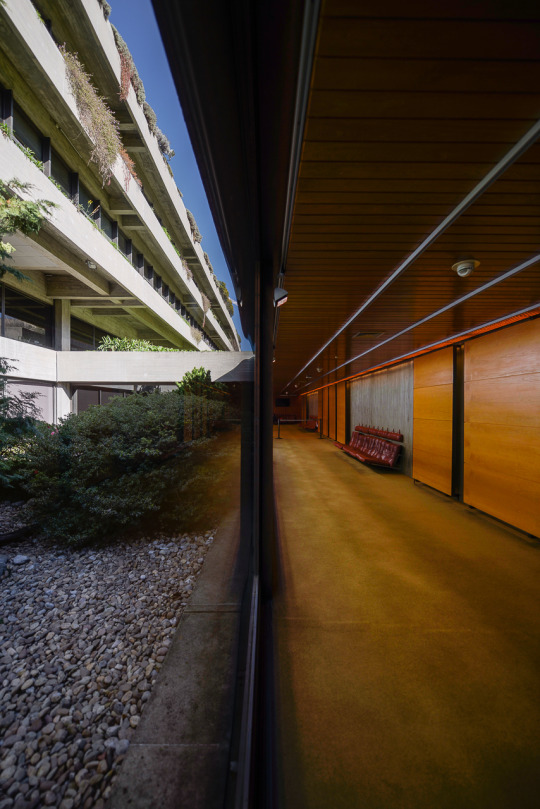
The Gulbenkian Museum design includes two wings in a T shaped format.
My other inspiration is cinema. I love cinema and animation, it’s the source from where I get my main references. For example from Kubrik’s or Miyazaki’s movies. And the amazing work of incredible photographers like Ezra Stoller and Ansel Adams keeps on being an inspiration as well.
Ricardo Oliveira Alves is based in Lisbon, Portugal. Facebook | Instagram | Pinterest | Twitter | Vimeo
8 notes
·
View notes
Text
I Attended the DJI Ronin Gimbal Workshop at Ted's World of Imaging on September 10 2022, Learned How To Use RS3 Pro, RS3, RS2 & RS2C
I Attended the DJI Ronin Gimbal Workshop at Ted’s World of Imaging on September 10 2022, Learned How To Use RS3 Pro, RS3, RS2 & RS2C
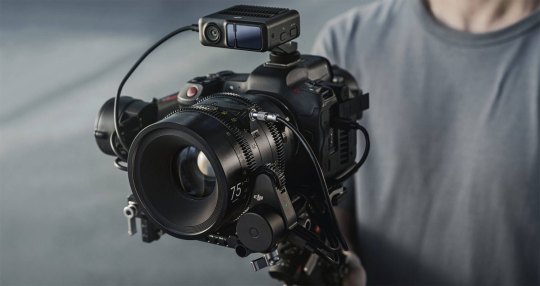
View On WordPress
#APS-C#cinema lenses#digital hybrid mirrorless cameras#DJI RS 3 Gimbal Stabilizer Combo#DJI RS 3 Pro Gimbal Stabilizer Combo#DJI RSC 2 Gimbal Stabilizer Combo#DJI RSC 2 Gimbal Stabilizer Pro Combo#Fujifilm GFX100#Fujifilm GFX100S#Fujifilm X-H2#Fujifilm X-H2S#Fujinon XF 18-120mm f/4.0 LM PZ WR#large format#large format cinematography#medium format#medium format cinematography#Super 35#Ted&039;s Events#Ted&039;s World of Events#Ted&039;s World of Imaging
0 notes
Text
Digital Photo Storage, Sorting and Manipulation
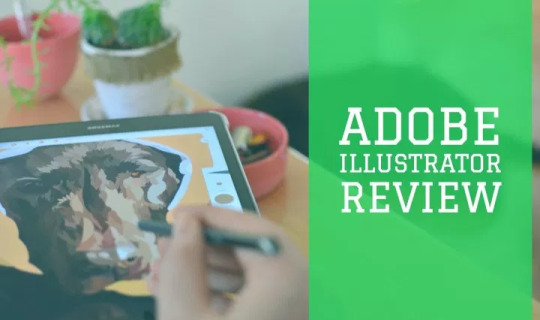
A digital photographer's darkroom is a place where all the post processing of his photographs are done in order to get the final finish which brings out the best of his photographs. You may have great photo gears and expensive camera and lenses that may take great photos but without a good post processing, your photos may not look its best. However, it is unfortunate that many photographers don't pay good attention in creating a good digital darkroom or post processing set up. There are few simple steps you can follow, few simple techniques you need to learn and apply and few items including software you need to source in order to create an effective and creative digital darkroom. In order to set up a digital darkroom, you need to allocate a space first. You don't need a big space for that. An extra spare room in your home, a corner of your living room or a portion of your home office can serve the purpose. Get a table, a comfortable chair and a storage rack to begin with. It will also be better if you can install neutral color curtains to cover the source of lights and make sure to paint the wall in neutral colors as well. Having neutral colors as the base room color will create less destruction and will help you focus on your computer monitor. Your table should preferably of L shaped or at least have some extra space to keep a photo printer and some extra stuff like your Camera(s) and notepads and other related accessories. Keep an extra folding chair just in case you need to have someone to work with you. Now the most important piece of hardware you need is a Computer. Does not matter if you use PC or Mac, but you need to make sure that you buy adobe lightroom a decent piece of hardware with a high resolution Monitor (preferably High Definition one.). Monitor size should be 17" and above allowing you to work with large format photographs. I found Dell ultra sharp monitors or Apple cinema displays as excellent choices. You may also have bigger sized laptops to do the work; however I won't recommend that as you may find your big and bulky laptop difficult to carry around to your shooting locations. What you may also do is, use an external monitor and attach it to your laptop when you work in your darkroom. Your laptop or computer should have a dual core or higher processor and at least 3GB RAM, decent graphic card and 320GB or higher storage space. Also get a decent photo printer to be able to print regular sized photos. I like Epson as my preferred brand for this; however you choose whatever you like based on your budget and requirement. Next thing you need is a storage rack to store your CDs/DVDs, Photo Gears, Books etc. Get a simple rack with locking feature to safely store your work and gears. You also will have to get one or two external hard drives to copy your photos from your computer and a CD/DVD burner to copy your photos in CD/DVD to keep as backup and also to give to your clients. I also suggest you buy an external memory card reader in order to download your photos to your Computer faster. Other thing you may need is few markers, CD/DVD sleeves, a table lamp or floor lamp and good speakers. Also make sure to have surge protectors and UPS in order to have uninterrupted power supply during your work. Let's look at the software side of your darkroom. First of all, you need image management and manipulation software. The first name comes to our mind is Adobe Photoshop. However, I must say that you really don't need to have Photoshop as your primary image management software. Photoshop is rather meant for professional graphic designers and digital artists. I would like to recommend another software from Adobe which is called Lightroom. It is more effective, far cheaper and easier software than Photoshop and this is more than what you need. Lightroom is more of an image management program with strong editing functions and a great raw conversion and editing program. Though Lightroom's photo editing is not as strong as Photoshop, but Lightroom does offer a lot in its editing and for many it will be all you ever need. But for photo only editing and correction, Lightroom is the way to go and of course you can use Photoshop as well if you want to. Oh I forgot to mention that if you shoot RAW, then you must use a RAW conversion and editing program. If your Camera has RAW capability, it will come with RAW conversion software and it will also have some RAW manipulation capability. You may also try to use Lightroom for RAW conversion and manipulation. Stepok's Raw Importer is a free and easy-to-use raw importing and converting tool, compatible with most camera models on markets. With the help of this tool, you can convert camera RAW files into best quality JPEG or TIFF format step by step. It supports batch converting! website HDR or High Dynamic Range photography is a new trend which many Photographers want to set their foot into. There are many HDR software available. The one I like and would like to recommend is Photomatix. You may also do some research to find the most suitable HDR software for you. Digital photographic files are really a subset of a much larger group of files called computer graphic files. And this group is really quite large. Perhaps the best authoritative text on computer graphics files is a big book called 'The Encyclopedia of Graphics File Formats'. Also published by O'Reilly; this reference book will give you the skinny on the differences between JPEG, TIFF, BMP, etc. It's more of a 'nice to have on hand' type book. And it will definitely help you to think accurately about the file types it describes. If you have followed the above steps, then you are all set. Now start your journey. Few last things I must say are, calibrate your monitor, wear a neutral color outfit to minimize the interference with the monitor and be creative but don't over manipulate your photos. So enjoy and wish you all the best.
1 note
·
View note
Text
youtube
Chevy Show (1982) Six Flags Amusement Park Thrill Ride
From 1969 to 1984, Shelton Productions created amusement park films for Chevrolet that ran exclusively at various Six Flags amusement parks. Although the film format was standard 4-perf 35mm anamorphic film with a 4-track magnetic soundtrack, it was branded as “Cinema 110”. The films were shown in a facility referred to as “The Chevy Show Theater” or “The Cinesphere Chevy Show Theater”. This dome-shaped building projected these films using very short throw lenses onto an almost-too-large-for-the-room curved screen that filled the viewer’s vision, making it so the image filled the viewer’s peripheral vision. The intention was to make the viewer feel like they were in the middle of the action, and for those of us who experienced it, the effect worked.
1 note
·
View note
Text
What role has technology played in altering how movies are made?
Filmmakers can create 3Dimensional videos with 4k or 8K resolution by using the Lucid camera, VR technology, and high-definition formats. With the use of this technology, filmmakers may capture underwater scenes, shots from various perspectives, and high-octane action sequences that will give viewers an immersive experience. Grab an opportunity to learn from the best 3D animation courses in Pune.
The new cameras that enable cinematographers to film in a much higher clarity may be where technology has had the biggest impact. It enables the audience to appreciate the set design's excellent and incredible well-organized work even more. In the present era, technology has also played a magnificent role in propelling the complete cinema segments, making it possible to generate films that were previously impossible.
The following sections discuss a few areas where technology has admirably performed wonders to transform the field of filmmaking.
* High-Effects Tech's on Cost
The movie is the old-school producers' favourite medium. For a studio to accept, it is usually too expensive. A movie typically has a few flaws, which mostly define the validity that the director is aiming for. The film is expensive and difficult to reuse. That means a shooting day must provide film the team can use, or else it's likely that every resource consumed that day was a waste. Even after the last day of filming, the costs of the movie continue. Film needs to be produced by cinematographers, and then there is the pricey process of editing the film.
Going digital implies, to a large extent, a time before the enormous film canisters that were formerly associated with the art of making movies. Additionally, it suggests that production firms accomplish their shot schedules with minimal waste, keeping the entire project within or very close to the financial budget.
* High-Impact Tech's on Editing
Another area where digital outperforms the use of film is in postproduction. Exact artistry was usually required when adding special visuals to the movie because the impact had to blend seamlessly with the action being captured. Editors never again go through a tedious process like this. Within a comparable programme or series of projects, digital effects are created and added to the photo. Additionally, this programme enables editors to examine entire sections of a movie, effectively organising scenes once the effects of after-production are taken into account. That includes sound, and the audience is certain to hear every word and action they see because to the high-quality digital record in use today.
The finished piece of film has a cleaner appearance and precisely integrated affects. Most of the time, the audience cannot tell when CGI is being used, but it is a handy tool that producers have increasingly employed to establish the scene.
* High-Impact Tech's on Shooting
Digital photography makes shooting much simpler because you can get more done in less time. Since multiple cameras can work on the same shot, you typically obtain the advantage you need without waiting for retakes. The majority of filmmakers prefer filming digitally since it makes it simple to shoot many takes and to achieve different goals financially. The only two factors that affect a director's overall success are tempo and performance. Filmmakers typically enjoy having the freedom to shoot anything, including practises with the approval of the on-screen characters. Nobody truly knows what elements you'll be able to use when editing the shots.
The result is a shot that is getting cosier as a result of the new consistent cam gear that film has preferred. Because of the lenses that filmmakers are allowed to gaze through, the crowd seems like it was there at the time. Filmmakers also expend less effort reshooting the same scene from a different angle.
* High-Impact Tech's on Distribution
The process of digitally appropriating film hasn't quite reached its full potential, but independent film producers stand to benefit the most. For a long time, YouTube distribution has been the most popular kind of advertising. Studios have released expensive trailers, while independent filmmakers have posted video on various YouTube channels in search of funding and interested viewers. The quality has fundamentally decreased, which is obviously a bad influence, but it is increasingly a component of volume. Additionally, YouTube users openly applaud what is well-known, enabling others to find new and interesting content without expending a lot of time digging for it.
Although consumers can currently purchase movie rights digitally, this sector is still untapped. Although there is much debate over the future of film usage, businesses seem to be distributing movies online. Ben Stiller's 2011 movie Tower Heist was almost released to Comcast subscribers right before the shocking release, but the idea was rejected after certain theatres agreed not to screen the movie during a fight. Despite the fact that digital distribution promises an exciting new world, the film industry has yet to fully embrace this idea.
0 notes
Text
Best 6K Camera for Filmmaking: Top Choices & Key Features
When it comes to filmmaking, choosing the right camera is crucial for achieving high-quality results, and a 6K camera offers excellent resolution, dynamic range, and flexibility in post-production. With a 6K camera, filmmakers gain the ability to capture more detail, reframe shots without losing quality, and produce stunning visuals that stand out in professional productions. Below, we’ll discuss some of the best 6K cameras for filmmaking, their features, and why they are popular among filmmakers.

Top 6K Cameras for Filmmaking
1. Blackmagic Pocket Cinema Camera 6K Pro
The Blackmagic Pocket Cinema Camera 6K Pro is a favorite among independent filmmakers for its compact size, advanced features, and image quality. It features a Super 35mm sensor with a native resolution of 6144 x 3456 and dual native ISO for enhanced low-light performance.
Key Features:
Super 35mm 6K sensor with 13 stops of dynamic range.
Dual native ISO up to 25,600 for better low-light performance.
Built-in ND filters and HDR touchscreen for flexible shooting options.
Compatible with Canon EF mount lenses.
The 6K Pro version adds built-in ND filters and a tiltable HDR screen, making it more versatile for various shooting conditions.
2. RED Komodo 6K
The RED Komodo 6K is a compact yet powerful camera that incorporates RED’s renowned image quality and raw recording capabilities. It features a global shutter sensor, which eliminates rolling shutter issues and is excellent for high-action scenes.
Key Features:
6K Super 35mm global shutter sensor.
16 stops of dynamic range.
Compact and lightweight design, ideal for handheld or gimbal work.
Supports ProRes and REDCODE RAW recording formats.
The RED Komodo 6K is perfect for filmmakers who need a portable yet professional camera for diverse shooting environments.
3. Canon EOS C300 Mark III
The Canon EOS C300 Mark III is a high-end cinema camera with a Super 35mm Dual Gain Output (DGO) sensor, which offers exceptional dynamic range and low-light performance. Its modular design makes it highly customizable for various production needs.
Key Features:
Super 35mm DGO sensor with 16+ stops of dynamic range.
4K at up to 120fps and 2K at up to 180fps.
Supports Canon’s XF-AVC and Cinema RAW Light recording formats.
Modular body with interchangeable mounts.
The C300 Mark III is ideal for professional filmmakers working on large-scale projects requiring a robust and flexible camera system.
4. Panasonic Lumix S1H
The Panasonic Lumix S1H is a full-frame mirrorless camera with a strong emphasis on video capabilities. It offers 6K recording in multiple aspect ratios and supports anamorphic shooting modes, making it a versatile option for filmmakers.
Key Features:
24.2-megapixel full-frame sensor with 14+ stops of dynamic range.
6K recording at 24fps and 4K at up to 60fps.
Dual native ISO for improved low-light performance.
5-axis in-body image stabilization.
The S1H’s ability to shoot in multiple formats and support for V-Log makes it a great choice for filmmakers who need flexibility and high image quality.
5. Z CAM E2-S6
The Z CAM E2-S6 offers a Super 35mm 6K sensor and is known for its affordability without compromising on professional features. It supports high frame rate recording and provides excellent image quality in a compact design.
Key Features:
Super 35mm 6K sensor with 10-bit ProRes and ZRAW recording.
6K at up to 60fps and 4K at up to 120fps.
Compact and modular design with HDMI and SDI outputs.
Compatible with EF and PL mount lenses.
The Z CAM E2-S6 is suitable for indie filmmakers and content creators looking for a cost-effective solution that still delivers high-quality results.
What to Look for in a 6K Camera for Filmmaking
When selecting a 6K camera for filmmaking, consider the following factors:
Sensor Size and Type: Full-frame and Super 35mm sensors offer better depth of field and low-light performance.
Dynamic Range: A higher dynamic range captures more detail in shadows and highlights, which is essential for cinematic-quality images.
Recording Formats: Look for cameras that support ProRes, RAW, and other professional recording formats for flexibility in post-production.
Frame Rates: High frame rates are crucial for capturing smooth motion and slow-motion footage.
Lens Compatibility: Ensure the camera is compatible with professional lens mounts like EF, PL, or L-mount.
Conclusion
Choosing the best 6K camera for filmmaking depends on your specific needs, budget, and the type of projects you plan to work on. Whether you opt for the compact and versatile Blackmagic Pocket Cinema Camera 6K Pro, the high-performance Canon EOS C300 Mark III, or the portable RED Komodo 6K, each of these cameras offers exceptional quality and features that can elevate your filmmaking projects.
For more information or assistance in selecting the best 6K camera for your next film, feel free to reach out and get expert advice on choosing the right gear!
🔗Read More: https://royalaffectionmedia.com/best-6k-camera-for-filmmaking/
0 notes
Text
Exploring Cinematic Excellence in Los Angeles: Zeiss Supreme Prime and ARRI Alexa 35 Rentals
Los Angeles, often referred to as the entertainment capital of the world, is a hub for filmmakers, cinematographers, and production companies seeking top-notch equipment to bring their creative visions to life. When it comes to cinematography, two names that stand out are the Zeiss Supreme Prime lenses and the ARRI Alexa 35 Rental camera. Let's delve into the world of these cinematic gems available for rental in Los Angeles.
Zeiss Supreme Prime Rental Los Angeles
Zeiss Supreme Prime lenses have become synonymous with cinematic excellence. These high-quality cinema lenses are renowned for their impeccable optical performance, precision engineering, and the ability to capture stunning visuals with breathtaking clarity. In Los Angeles, filmmakers and cinematographers have the privilege of renting these exceptional lenses for their projects.
The Zeiss Supreme Prime lenses offer a range of focal lengths, from wide-angle to telephoto, allowing cinematographers to choose the perfect lens for any scene. Whether you're shooting a sweeping landscape or an intimate close-up, these lenses deliver exceptional sharpness, minimal distortion, and beautiful bokeh, making them a preferred choice for many in the industry.
These lenses are designed with cinematographers in mind, featuring consistent lens dimensions and a uniform front diameter, making it easy to switch lenses without adjusting camera accessories. The Zeiss Supreme Prime lenses also come equipped with a PL mount, ensuring compatibility with a wide range of professional cameras.
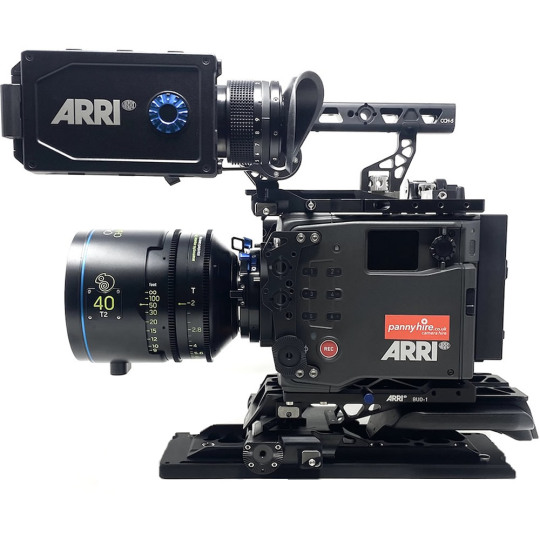
When renting Zeiss Supreme Prime lenses in Los Angeles, you'll have access to the latest models, ensuring your project benefits from cutting-edge lens technology. These lenses are built to deliver stunning images in a variety of lighting conditions, making them ideal for both studio and outdoor shoots.
ARRI Alexa 35 Rental
The ARRI Alexa 35 is a legendary digital cinema camera that has set industry standards for image quality, reliability, and versatility. Known for its exceptional image-capture capabilities, the ARRI Alexa 35 is the camera of choice for many top-tier filmmakers in Los Angeles and around the world.
This high-end camera boasts a large 35mm sensor, enabling it to capture breathtakingly cinematic images. With a wide dynamic range, it excels in reproducing details in highlights and shadows, providing cinematographers with the freedom to achieve their artistic vision. Whether you're shooting a feature film, documentary, or commercial, the ARRI Alexa 35's image quality is unparalleled.
What sets the ARRI Alexa 35 apart is its user-friendly interface and rugged build, making it appropriate for a variety of shooting scenarios. It's designed to adapt to various production needs, from handheld shots to complex rigs and setups.
The ARRI Alexa 35 also offers a choice of ProRes or ARRIRAW recording formats, giving filmmakers the flexibility to choose the best workflow for their project. It's compatible with a wide array of lenses, including Zeiss Supreme Prime rental Los Angeles , offering cinematographers the freedom to experiment and achieve their desired look.
Conclusion
Los Angeles is a city where cinematic dreams come true, and the availability of Zeiss Supreme Prime lenses and ARRI Alexa 35 cameras for rental adds to the allure of this filmmaking mecca. Whether you're a seasoned professional or an aspiring filmmaker, having access to top-tier equipment can make all the difference in your creative endeavours.
For those looking to elevate their cinematography to the next level, you can find Zeiss Supreme Prime lenses and ARRI Alexa 35 cameras available for rental at [mention website] pannyhire.com. This reputable rental service provides access to high-quality cinematic equipment, ensuring that your project stands out with exceptional visual storytelling. When it comes to capturing the magic of Los Angeles on film, trust in the excellence of Zeiss and ARRI, available for rental at Panny Hire.
0 notes